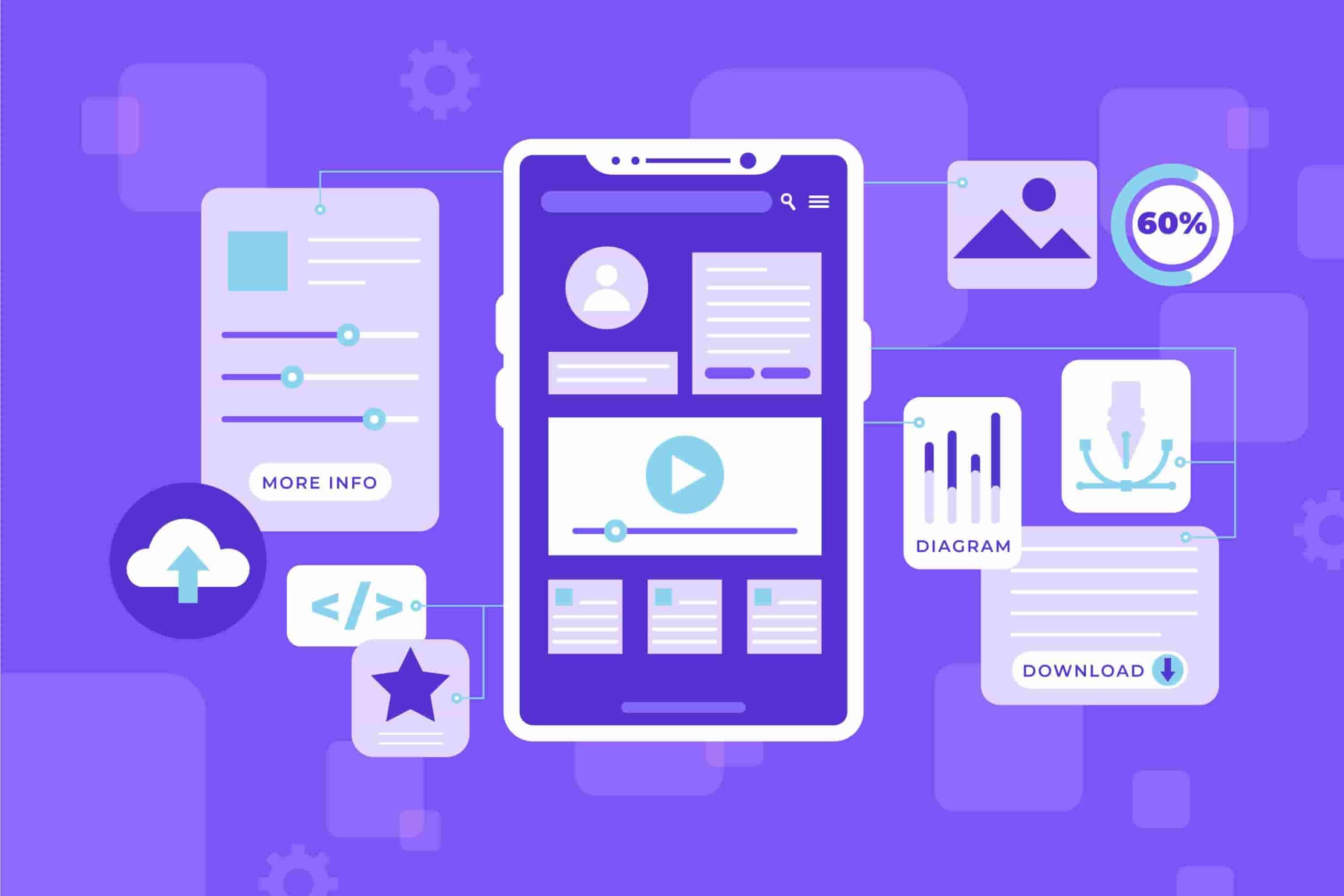Starting on the journey of Android development can be both exciting and daunting. With the widespread popularity of Android devices and the ever-growing demand for mobile apps, mastering Android development opens doors to endless opportunities. In this blog, we’ll provide a comprehensive roadmap to guide aspiring Android developers through the various stages of learning and skill acquisition, empowering them to build high-quality Android apps and embark on a successful career in mobile app development.
Understanding the Basics:
Before diving into Android development, it’s essential to establish a solid foundation in programming fundamentals and software development concepts. Familiarize yourself with core programming languages such as Java or Kotlin, as well as essential concepts like variables, data types, control structures, and object-oriented programming principles.
Learning the Android Development Environment:
Get acquainted with the Android development environment and tools, including Android Studio, the official Integrated Development Environment (IDE) for Android development. Explore the various components of Android Studio, such as the Layout Editor, XML editor, and Debugger, to understand their functionalities and how they facilitate app development.
Mastering Java or Kotlin:
Java has long been the primary programming language for Android development, but Kotlin has gained popularity in recent years due to its modern syntax and enhanced features. Choose either Java or Kotlin as your primary programming language for Android development and immerse yourself in mastering its syntax, features, and best practices.
Understanding Android Components:
Familiarize yourself with the fundamental building blocks of Android apps, known as Android components. Learn about activities, fragments, services, broadcast receivers, and content providers, and understand their roles in creating interactive and responsive Android applications.
Exploring User Interface (UI) Design:
Dive into the world of UI design and user experience (UX) principles to create visually appealing and intuitive Android apps. Learn about layout XML files, views, view groups, and resource management to design and customize user interfaces that meet design guidelines and provide a seamless user experience across different screen sizes and resolutions.
Working with Data Storage:
Understand the various options for storing and managing data in Android apps, such as Shared Preferences, SQLite databases, and file storage. Explore techniques for data retrieval, manipulation, and persistence, and learn how to implement efficient data storage solutions that meet the requirements of your app.
Implementing Networking and Connectivity:
Learn how to integrate network connectivity into your Android apps to enable features such as data synchronization, remote data retrieval, and real-time communication. Explore networking libraries like Retrofit and Volley, and understand concepts such as HTTP requests, JSON parsing, and RESTful APIs to implement robust networking solutions.
Utilizing Third-Party Libraries and APIs:
Familiarize yourself with popular third-party libraries and APIs that streamline development and provide additional functionality for your Android apps. Explore libraries for dependency injection, image loading, UI animations, and other common tasks to expedite development and enhance the performance and functionality of your apps.
Testing and Debugging:
Master the art of testing and debugging Android apps to ensure their reliability, stability, and performance. Learn about unit testing, integration testing, and UI testing methodologies, and leverage tools like JUnit, Espresso, and Android Debug Bridge (ADB) to identify and resolve bugs and issues effectively.
Publishing to the Google Play Store:
Once your Android app is ready for deployment, familiarize yourself with the process of publishing it to the Google Play Store. Understand the requirements and guidelines for app submission, including content policies, quality standards, and distribution agreements, and prepare your app for a successful launch to reach a global audience of Android users.
Advanced Topics and Specializations:
Once you have a solid understanding of the fundamentals and have built a few Android apps, consider delving into more advanced topics and specialized areas of Android development. This may include:
Advanced UI/UX Design:
Explore advanced UI design patterns, motion design principles, and accessibility guidelines to create polished and user-friendly interfaces.
Performance Optimization:
Learn techniques for optimizing app performance, reducing memory usage, and minimizing battery consumption to ensure smooth and efficient operation on a wide range of devices.
Security and Privacy:
Dive deeper into security best practices for Android apps, including encryption, secure data storage, and protecting against common security threats such as SQL injection and cross-site scripting (XSS).
Firebase Integration:
Explore the features and capabilities of Google Firebase, a comprehensive platform for building and scaling mobile and web applications. Learn how to integrate Firebase services such as authentication, real-time database, cloud messaging, and analytics into your Android apps.
Android Jetpack Components:
Familiarize yourself with Android Jetpack, a collection of libraries, tools, and guidance to help developers build high-quality Android apps more easily. Explore Jetpack components such as ViewModel, LiveData, Room, Navigation, and WorkManager to streamline app development and improve code quality.
Mobile Game Development:
If you’re interested in game development, explore the world of mobile game development on the Android platform. Learn about game engines like Unity or Unreal Engine, and delve into topics such as game physics, graphics rendering, and optimization for mobile devices.
Continuous Learning and Professional Development:
Android development is a rapidly evolving field, with new technologies, tools, and best practices emerging regularly. Commit to lifelong learning and stay updated on the latest trends, advancements, and updates in the Android ecosystem. Participate in online courses, attend workshops and conferences, join developer communities, and contribute to open-source projects to expand your knowledge and skills.
Building a Portfolio and Networking:
As you gain experience and develop a portfolio of Android apps, showcase your work on platforms like GitHub, LinkedIn, or personal websites to demonstrate your expertise to potential employers or clients. Network with fellow developers, recruiters, and industry professionals through social media, forums, and meetups to expand your professional network and discover new opportunities in the Android development community.
Exploring Freelance or Entrepreneurial Opportunities:
Consider exploring freelance or entrepreneurial opportunities in Android development, whether it’s freelancing for clients, building your apps, or starting a mobile app development business. Freelancing allows you to work on diverse projects, gain valuable experience, and build a reputation in the industry, while entrepreneurship offers the potential for creative freedom, financial independence, and business ownership.
By incorporating these additional aspects into your Android development journey, you can continue to grow and evolve as a developer, expand your skill set, and unlock new opportunities for career advancement and personal growth in the dynamic and ever-expanding field of Android development.
Conclusion:
Starting on the journey of Android development requires dedication, perseverance, and a commitment to continuous learning. By following this comprehensive roadmap, aspiring Android developers can acquire the knowledge, skills, and experience needed to build high-quality Android apps and embark on a rewarding career in mobile app development. Whether you’re a beginner taking your first steps in Android development or an experienced developer seeking to expand your skill set, this roadmap provides a clear path to success in the dynamic and ever-evolving world of Android development.


